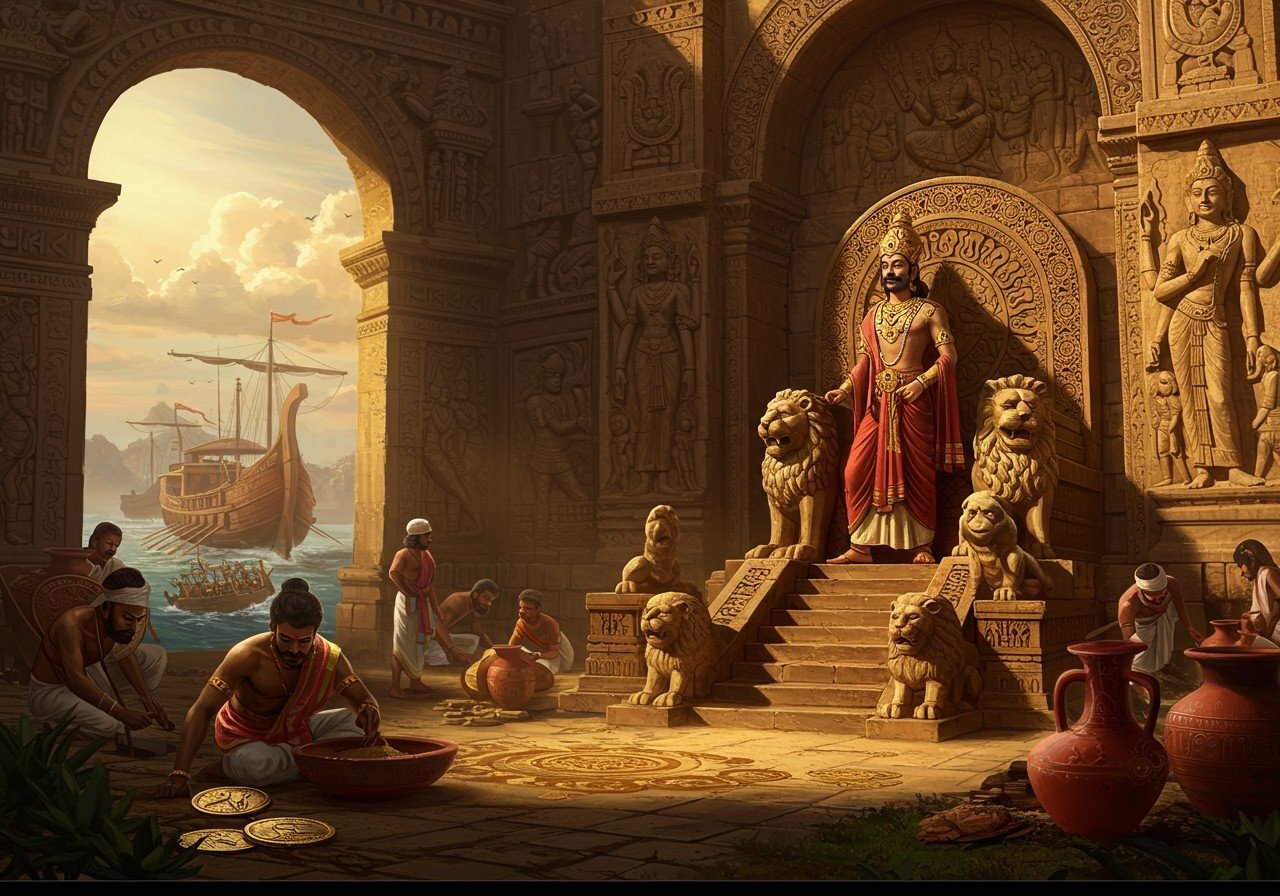
The Satavahana Dynasty, a significant chapter in Indian history, flourished between the 1st century BCE and the 3rd century CE. This comprehensive guide provides valuable insights and notes for UPSC aspirants, focusing on the historical context and key developments of this era. Explore the rise and fall of this influential dynasty, their contributions to art, culture, and trade, and their lasting impact on India’s heritage. This information is relevant for UPSC preparation, including the 2024 and 2025 exams.
Historical Background and Origin
Emerging in the Deccan region after the decline of the Mauryan Empire, the Satavahana Dynasty played a crucial role in shaping the political landscape of ancient India. Their founder, Simuka, consolidated power and laid the foundation for an empire that extended across present-day Andhra Pradesh, Telangana, and Maharashtra, with Pratishthan as their capital.
- Founder: Simuka, who initiated Satavahana rule and expanded the kingdom.
- Geographical Extent: Dominated the Deccan region, including modern-day Andhra Pradesh, Telangana, and Maharashtra, influencing the region’s culture and development.
- Historical Context: Rose to prominence after the decline of the Mauryan Empire around the 1st century BCE, marking a transition of power in the region.
Read more about the history and formation of Andhra Pradesh, a key region under Satavahana rule: Andhra Pradesh: A Journey Through Time, History, and Formation
Political Structure and Administration
The Satavahanas established a centralized administrative system led by the king. Local governance played a vital role, with provincial governors and village heads managing daily affairs. Inscriptions found at Nasik and Nanaghat provide valuable information about their administrative practices.
- Centralized Administration: The king held supreme authority, supported by a structured hierarchy of officials and local administrators.
- Local Governance: Provincial governors and village heads ensured effective administration at the regional and local levels, contributing to stability and efficient governance.
- Inscriptions: Inscriptions at Nasik and Nanaghat offer valuable insights into the dynasty’s administrative structure, legal systems, and societal norms.
Learn more about Andhra Pradesh’s governance: Andhra Pradesh Governance: Key Players and Structures
Economic and Trade Developments
The Satavahana economy thrived on agriculture, crafts, and extensive trade networks. They controlled vital trade routes, including the Silk Road and maritime links with Rome and Southeast Asia. Their distinctive coinage, often made of lead and potin, reveals valuable details about their economic activities.
- Economic Pillars: A diversified economy based on agriculture, flourishing crafts, and vibrant trade networks.
- Trade Routes: Controlled important trade routes like the Silk Road and maritime connections, facilitating exchange of goods and cultural interaction with distant regions like Rome and Southeast Asia.
- Coinage: Lead and potin coins, often bearing inscriptions, provide crucial evidence of the dynasty’s economic practices, trade relations, and royal authority.
Delve deeper into Andhra Pradesh’s culinary heritage, influenced by its rich history of trade and cultural exchange: Andhra Pradesh Cuisine: A Culinary Journey
Cultural and Artistic Contributions
Known for their patronage of art and architecture, the Satavahanas constructed magnificent stupas, viharas, and chaityas. Sites like the Amaravati Stupa and the Ajanta Caves stand as testaments to their artistic achievements, reflecting influences from both Buddhist and Brahmanical traditions.
- Architectural Marvels: Constructed impressive stupas, viharas, and chaityas, showcasing advanced architectural skills and artistic sensibilities.
- Key Sites: The Amaravati Stupa and the Ajanta Caves are prime examples of Satavahana art and architecture, reflecting the dynasty’s patronage of religious and artistic endeavors.
- Religious Influences: Their art and architecture blended Buddhist and Brahmanical elements, demonstrating religious tolerance and a rich cultural synthesis.
Poojn.in: Your Resource for Cultural Exploration
Poojn.in offers a wide selection of products that connect you with India’s rich cultural heritage, including items related to the Satavahana Dynasty period. Enhance your understanding of ancient Indian history with our collection:
- Ashoka Chal Powder: Explore traditional ingredients used in ancient rituals.
- Pooja Asan: Create a sacred space for your studies and reflection.
- Sai Baba Sculpture: Discover exquisite handcrafted idols representing India’s spiritual traditions.


